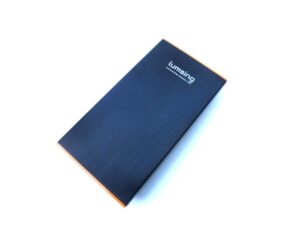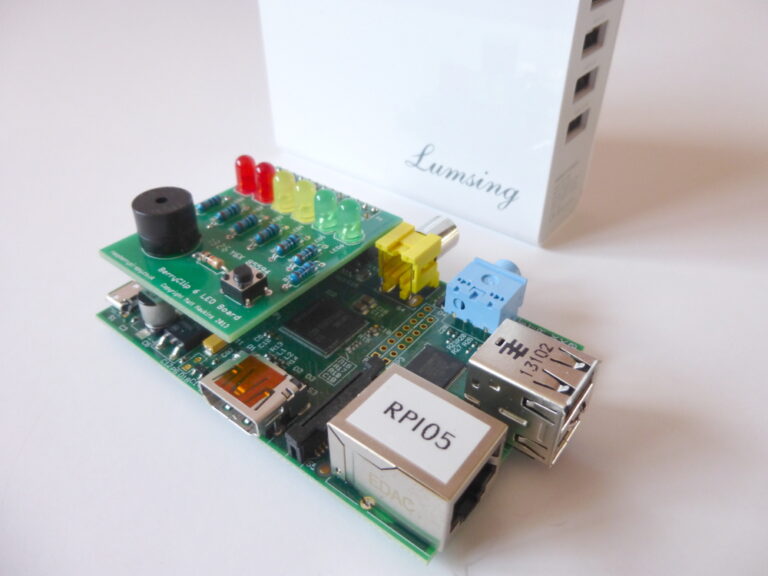Recently I was sent a new USB Power Bank by Lumsing. Rather than test it in isolation I decided to test against the three existing battery packs I already had. This would give a better point of comparison but would also allow me to revist the performance of the devices I tested when they were new.
As a bonus I would also be able to assess the energy consumption of the Model B+.
As with previous tests I used my standard method. It uses a Python script that lights up LEDs on a BerryClip add-on board. This draws an extra 5mA via the GPIO header and ensure the Pi is performing some work. The LEDs also give a good indication that the Pi is working during the test period.
 The new kid on the block is the Lumsing PBJ-6200 6000mah Ultra Slim Portable Power Bank. It has two USB outputs rated at 1A and 2.1A. It can be charged with a standard microUSB charger. It’s the smallest and sleekest battery in the group and is cased in a metal shell.
The new kid on the block is the Lumsing PBJ-6200 6000mah Ultra Slim Portable Power Bank. It has two USB outputs rated at 1A and 2.1A. It can be charged with a standard microUSB charger. It’s the smallest and sleekest battery in the group and is cased in a metal shell.
My existing devices are a RAVPower RP-PB07 10400mAh, Lumsing PB-AS008 11000mAh (both from Amazon) and a generic 12000mAh (from eBay).
Here are the results :
| Brand | Device Model | Capacity (mAH) | Age | Model B (Hrs:Mins) | Model B+ (Hrs:Mins) |
|---|---|---|---|---|---|
| Lumsing | PBJ-6200 | 6000 | New | 11:20 | 18:20 |
| RAVPower | RP-PB07 | 10400 | New | 17:55 | – |
| RAVPower | RP-PB07 | 10400 | 1yr+ | 17:00 | 28:55 |
| Lumsing | PB-AS008 | 11000 | New | 19:22 | – |
| Lumsing | PB-AS008 | 11000 | 3mths | 18:40 | 28:45 |
| Generic | 12000 | New | 18:40 | – | |
| Generic | 12000 | 1yr+ | 15:55 | 25:40 |
There were a few conclusions I made after completing these tests :
- The Model B+ consumes 30-36% less energy than the Model B.
- The run-time is largely proportional to the stated capacity.
- Branded devices perform better than generic equivalents.
- Older power banks loose performance over time.
The results are consistent with the estimates provided by my Pi Power Estimator App.
I think USB Power Banks are a great product to own because not only can you use them for Pi projects but they are useful to keep your phone charged when you are away from home.
What device you choose will depend largely on the capacity you require but beware of inflated capacity claims especially if buying from eBay. With the release of the Model B+ things are looking even better for portable Pis everywhere!






1 Comment
Yes all Li-Ion batteries lose capacity over time, but that rate can vary from glacially slow to very fast. Two things control this: the average charge level and temperature. Batteries stored at 100% are under a higher degree of stress and will lose capacity quicker. But at 80% or less they last a lot longer. High temperatures (30 or more) are also a killer. The longest life can be obtained at 40% charge, stored at fridge temperature – but you don’t need to go to that extreme. Just avoid 80-100% for long periods.
Matt I can also recommend the Intocircuit Power Castle 11200mAh. It won a group test on the Wirecutter, and has a very useful LCD percentage charge display. You can borrow mine if you want to run a comparison.